It’s the time of year for saving money!
On December 23, 1900, Reginald A. Fessenden became the first person to send audio (wireless telephony) by means of electromagnetic waves, successfully transmitting it over a distance of about 1.6 kilometers. Six years later, on Christmas Eve, 1906, he became the first person to ever make a public radio broadcast.
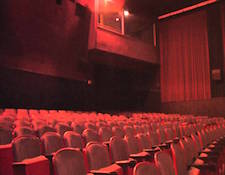 The triode vacuum tube — the device that first allowed electrical amplification and that enabled
The triode vacuum tube — the device that first allowed electrical amplification and that enabled
Fessenden’s initial 1.6 kilometers of broadcast range to eventually span the world and, in fact, to become truly universal ― was invented in 1906 by an American Electrical Engineer, Lee De Forest, who called it the “Audion”.
Initially, the triode tube was used only as a “detector” for radio receivers, and its ability to amplify a small signal by using it to control a larger current flow wasn’t discovered until 1912. Once that happened, though, the development of vacuum tubes and the electronic circuitry that they enabled was quick and colossal, with the first commercial radio station being licensed in 1920, only eight years later and, only seven years after that, in 1927, the first “talking picture”, The Jazz Singer, was released to huge audience and financial success.
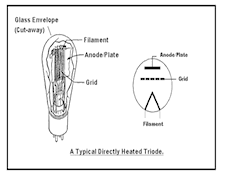 The success of radio and of the “talkies” was phenomenal, and I’ve heard stories about radio claiming that, by the 1930s,- because virtually every household had a radio and because certain radio shows (Amos ‘n Andy or The Jack Benny Show, for example) were listened to by practically everyone – you could walk down the street in an urban neighborhood and, just listening to whichever show was on through the open windows of the houses you passed, never miss a single word. The success of talking pictures was equally huge, and, even more than ever, the typical American “night out” became a trip to the movies.
The success of radio and of the “talkies” was phenomenal, and I’ve heard stories about radio claiming that, by the 1930s,- because virtually every household had a radio and because certain radio shows (Amos ‘n Andy or The Jack Benny Show, for example) were listened to by practically everyone – you could walk down the street in an urban neighborhood and, just listening to whichever show was on through the open windows of the houses you passed, never miss a single word. The success of talking pictures was equally huge, and, even more than ever, the typical American “night out” became a trip to the movies.
The result of these two new and overwhelmingly well-received entertainment media was huge sales of radios, and both the addition of a sound system to existing movie theaters and the building of vast numbers of new movie houses already equipped to show talking pictures. And, as with any new and booming industry, competition for the big bucks to be made spurred the new field of electronics to massive growth.
Particularly in the movies, though, there were problems to be solved along the way: For one thing, massive audiences meant that theaters had to be built big – or, as in the case of some of the truly grand movie theaters built at the time, HUGE – and filling a big room (or even one just big enough to seat fifty or a hundred people) with sound was a big problem.
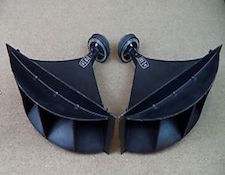 Do you know those exquisite and sometimes violently expensive tiny-wattage “purist” amplifiers that use just a single triode output tube – a 300B, for example, or, as used in the Audio Note “Ongaku” amplifier, a 211 — per stereo channel? Well, in those early days, there were no “audiophiles” in the present sense, and there were no “purists” who looked to ultimate simplicity as the source of sonic nirvana. What there were, instead, were dedicated engineers trying to solve problems, and triode amps with tiny outputs s were that time’s “state-of-the-art”; not a purist luxury, as they are today, but all they had to work with.
Do you know those exquisite and sometimes violently expensive tiny-wattage “purist” amplifiers that use just a single triode output tube – a 300B, for example, or, as used in the Audio Note “Ongaku” amplifier, a 211 — per stereo channel? Well, in those early days, there were no “audiophiles” in the present sense, and there were no “purists” who looked to ultimate simplicity as the source of sonic nirvana. What there were, instead, were dedicated engineers trying to solve problems, and triode amps with tiny outputs s were that time’s “state-of-the-art”; not a purist luxury, as they are today, but all they had to work with.
The problem that those engineers had to solve wasn’t sonic perfection, but the much more mundane one of how to get sound loud enough that everyone could hear it, and it wasn’t just a movie theater problem: Night clubs (yeah, the fancy kind, with a guy in a tuxedo as the manager, just like in all those George Raft films), and concert halls and sports events, and political rallies, and any place at all that a large group of people might get together and all need to hear the same thing at the same time — every one of those had the same problem.
A market obviously existed for truly loud sound systems, and it was equally obvious that there were only three separate ways (not including the possible combinations) in which such a thing could be developed: You could use multiple speakers and amplifiers to get big sound to a big place; you could build more powerful amplifiers; or you could build more sensitive (higher sonic output per Watt of input) speakers.
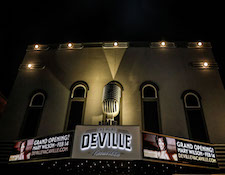 All of those approaches were tried in various applications. Multiple speaker/amplifier systems were certainly used. More powerful amplifiers (and the technologies to create them) were certainly developed (although even by the mid-1950s, the McIntosh MC-60, that produced 60Watts in the AB mode, was still considered a HUGE amplifier for its time); and more sensitive speakers were certainly developed, virtually ALL using the horn principle.
All of those approaches were tried in various applications. Multiple speaker/amplifier systems were certainly used. More powerful amplifiers (and the technologies to create them) were certainly developed (although even by the mid-1950s, the McIntosh MC-60, that produced 60Watts in the AB mode, was still considered a HUGE amplifier for its time); and more sensitive speakers were certainly developed, virtually ALL using the horn principle.
To understand horns, just think of the old megaphone – the thing that, before the electric bullhorn, athletic coaches and politicians (among others) used to concentrate their voice and make it heard far away. It was just a flaring cone of paper, leather, or some other material that you yelled into at the small end and your voice came out louder and more directionally focused at the big end. Horn loudspeakers work in exactly the same way: a diaphragm (now typically that of a “compression” driver” is attached to a flaring conduit (the acoustical “horn”) to most efficiently couple the varying air pressures produced by the moving diaphragm to the surrounding air and thus, whether by reducing acoustic impedance; by concentrating the available energy to a smaller and more directed area; by purposely creating resonances to amplify certain frequencies; or by some combination of those things, make the sound a whole lot louder than just the driver would be if it were radiating – as most conventional drivers in most conventional speaker systems do – just into “free air”.
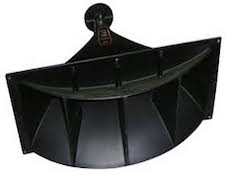 Horns were indeed capable of getting the sound loud but, in solving that one problem, they introduced another problem all their own: Because the lower the frequency to be passed, the bigger the horn has to be, both in length and “mouth” (the big end) size, horns to produce even moderate bass (60 to 80 Hz) tend to be quite large, and to get down into the very deep bass range, they must be IMMENSE. (Horn length and mouth size are determined by wavelength and the wavelength of a 20Hz tone is 54 feet [16.4592 meters]). That’s why, even in movie theaters, where there was room for truly large speakers, it was rare to get much below 50Hz – a frequency easily achievable by even “bookshelf” speakers today.
Horns were indeed capable of getting the sound loud but, in solving that one problem, they introduced another problem all their own: Because the lower the frequency to be passed, the bigger the horn has to be, both in length and “mouth” (the big end) size, horns to produce even moderate bass (60 to 80 Hz) tend to be quite large, and to get down into the very deep bass range, they must be IMMENSE. (Horn length and mouth size are determined by wavelength and the wavelength of a 20Hz tone is 54 feet [16.4592 meters]). That’s why, even in movie theaters, where there was room for truly large speakers, it was rare to get much below 50Hz – a frequency easily achievable by even “bookshelf” speakers today.
The invention of “folded” horns and, later “corner” horns did much to reduce the size and amount of space necessary for good horn bass, but corner horns, again, brought a new problem with them. That and a number of other things about speakers and the electronics to drive them are what I’ll write about next time.
See you then.





